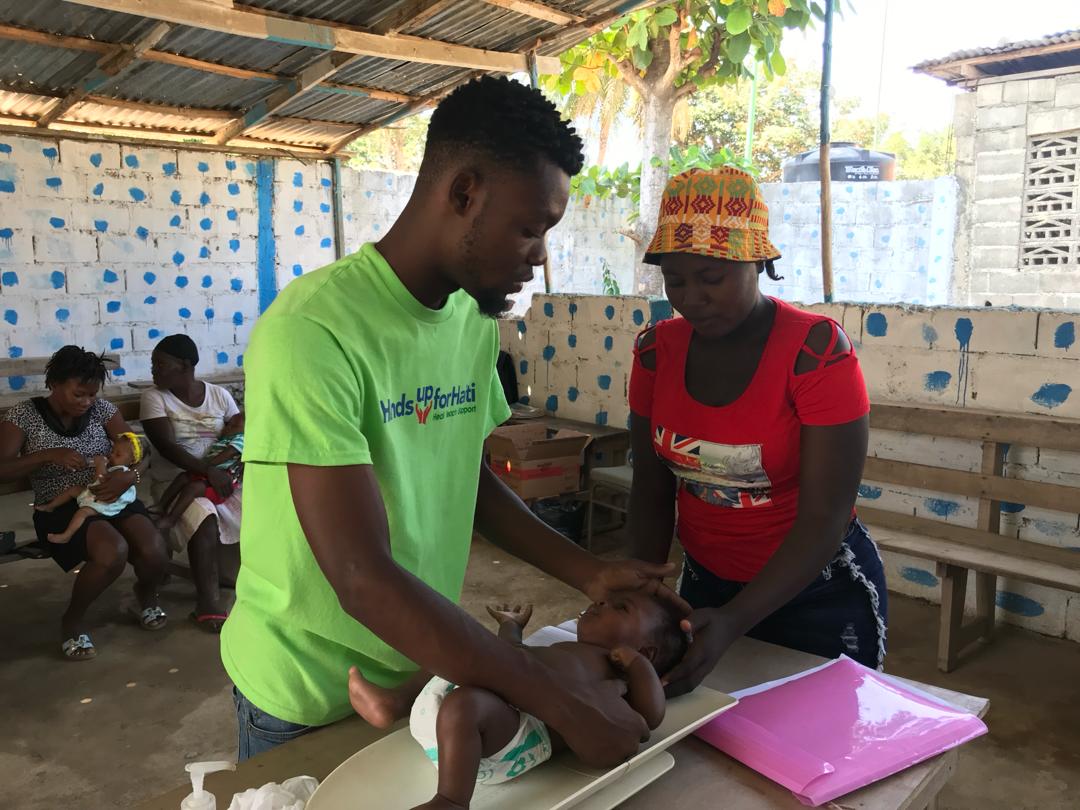by Margaret Keneman
Bonjou! Kommon ou ye? “Bonjou!,” which means “Hello!” in Haitian Creole, and “Kommon ou ye?,” meaning “How are you?,” are just a few of the expressions that our team practiced before meeting the Haitian youth groups that we would be teaching throughout the week.
As part of the public health initiative on this trip, our team worked with youth groups at three locations in Haiti – Shada, Bod me Limbe, and Open Door – to teach young people how to stay healthy and be safe. After all, we want the response to our question “Kommon ou ye?” to be “Mwen byen!” (“I’m doing well!”). In particular, the nursing students and the certified EMT students developed lessons prior to the trip related to topics such as safe sex, the causes and prevention of common cancers, nutritional practices to stay healthy, and CPR and first-aid.
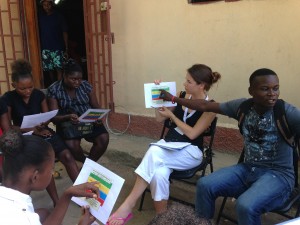
Nursing Student Katherine Stoesser Teaching – and Learning!
Developing these lessons was a unique task for our “student-teachers,” as they had to consider a learning environment very different from what they were accustomed to in the U.S. or Canada. Technically speaking, they could not rely on presentational tools such as computer projectors and PowerPoint software to present information. From a cultural perspective, they had to prepare to be sensitive to differences between themselves and the young Haitians.
In parts of the U.S., for example, we may assume that everyone knows about and has access to contraceptives such as condoms and the pill, but in parts of Haiti, it is not uncommon to use a necklace with 28 beads to keep track of the 28 days of a menstrual cycle. While this may seem strange to people in North America and may even be less effective from our point of view, our volunteers came to Haiti not only to teach but also to engage in conversations that shed light on and respected the cultural practices, local traditions, and religious values of each community in which we work.
These conversations in the classroom were successful thanks in large part to a very positive collaboration between our volunteers and the Haitians on staff at each location. Each lesson was taught by one or two volunteers and was facilitated by a Haitian staff member.
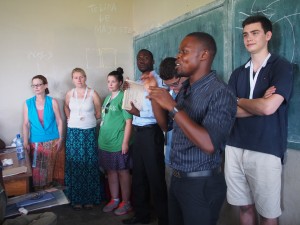
Our Translator Sonel Eugene Hard at Work with volunteers Alex Sudyn, Dr. Jill, Margaret Keneman, and Denise DeLorme
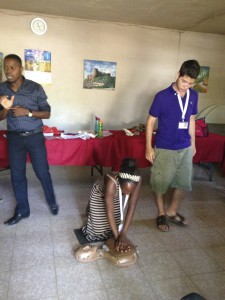
Working Together: Nurse Gayrleen Blemur and EMT Joe Israeli
It is not easy (and not necessarily realistic) to translate these medical and lifestyle concepts word for word, and it was often a combination of gestures, pictures, and props that got the point across.
Needless to say there was often a lot of laughter, not in a mocking or disrespectful way, but as a common, cross-cultural reaction to something funny, thus bridging the language barriers between our volunteers, the local staff, and the young Haitians in the classroom.
It is through these kinds of lighthearted interactions that our volunteers were able to connect with the young people in Haiti, both in and out of the classroom. In his reflections about the trip, Joe Israeli, a certified EMT from the University of Miami, explained how impacted he was by the connections he made with the young people. In particular, he shared a memorable moment that he had on the beach in Bod me Limbe: “There was a plethora of kids, and all they wanted to do was talk to me and socialize. The way that they played with me, looked up to me, and sought my approval was very touching. I will never forget all the kids there, since their joy was so sincere and infectious.”
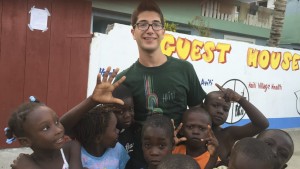
Volunteer & EMT Joe Israeli With Some Local Children
The deep connection that Joe made with the locals really influenced the way he approached his teaching. He went on to say: “I thought that I was going to come into Haiti and just do some teaching and that would be the end of it. However, this trip really taught me the joy of teaching healthcare. The way that the students paid attention and took notes spoke to me on a subliminal level.”
Katherine Stoesser, a Canadian nursing student, shared how meaningful it felt to earn the respect of the young Haitians while teaching them about nutrition. She explained: “It was amazing for me to see how engaged they were in our discussion. They asked many questions and took thorough notes throughout my presentation. It meant so much to me to be able to work with my translators so that I could interact with the youth and discuss with them ways to incorporate healthier foods into their daily lifestyles. I was very touched by their sincerity as the students thanked me for the lesson. It was evident to me that they truly appreciated the opportunity to learn from us that day.”
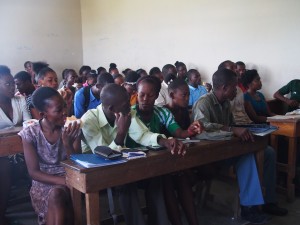
Studying Hard
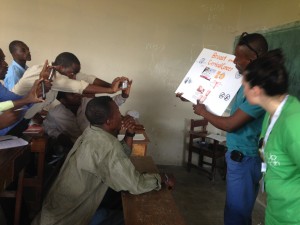
Making Sure to Get it All as Denise DeLorme Looks On
At each location, the Haitian students completed lessons on all four heath and safety related topics being taught by our volunteers that day. The Haitian students worked hard, listened carefully, asked thoughtful questions, and we hope they learned a lot. At the end of the day upon completion of the lessons of that day, the students earned certificates. The ceremony of presenting these certificates, while quick and relatively informal, was meant to represent a passing of the torch so our students could share the information they learned with their community members.
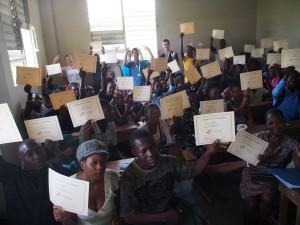
Students Proudly Showing Off Certificates at the End of a Day of Study
Katherine remembered feeling quite emotional as the Haitian youth accepted their certificates of completion at Open Door. She said: “It was an incredible feeling to help partake in their accomplishment that day and it is a memory from my first trip to Haiti that I will always cherish.”
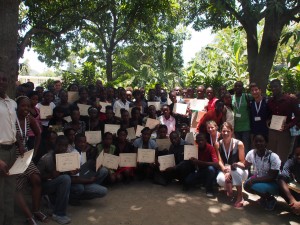
These Students, All Able to Share Information With Their Communities, together with our volunteer teachers
The educational activist Paolo Freire said that education should be the means by which people learn how to participate in the transformation of their world. We hope that our educational efforts in Haiti in July empowered Haitian young people to make a positive change in their communities.
Stay tuned for more reflections about our experiences in July, and an initial report of some of the findings from our research.


